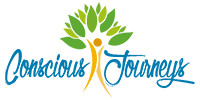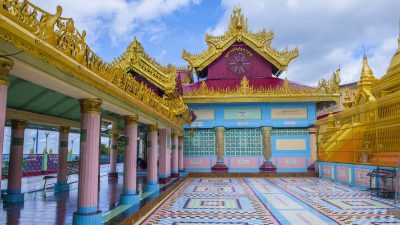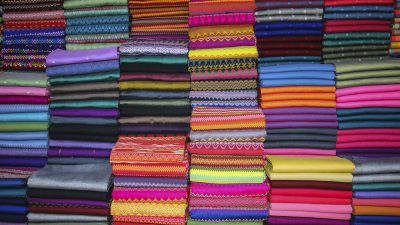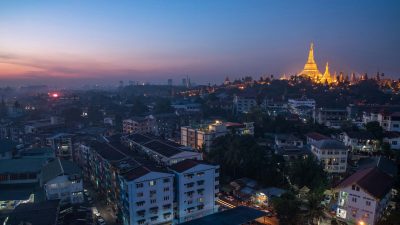The essence of Burma
Travel to burma – 9 days
This trip to Burma was designed for those people who have less time available but that are still interested in a conscious journey and getting in touch with locals. The tour of Burma (or Myanmar) lasts 9 days and it shows the most important tourist attractions and it will take you to the less noted villages to show you the rural reality and the most interesting community projects of Burma. The trip to Burma starts from Mandalay, the cultural capital of the country which stands on a hill and it is home of the Shwenandaw monastery and of the Kuthodaw pagoda. Near Mandalay you’ll visit the ancient capitals of Amarapura, Sagaing and Ava. You’ll then move to Pakokku and its famous textile market before reaching the rural village of Shar Pin Kaing for a cultural exchange with the local farmers and to taste traditional local dishes. With a small cruise along the Irrawaddy river you’ll reach Bagan, to admire at sunset the valley full of pagodas and maybe one of the most beautiful places of the entire Asia. The trip in Burma continues with Kyun Thiri village where you’ll visit the local monastery and you’ll experience a typical day of local populations, to which you could donate support for their children. You’ll continue the journey with a flight from Bagan to Heho where in the surronding area you could visit the famous Inle lake and the Intha population who have lived on stilts for centuries and live in symbiosis with the lake. The last days will be dedicated to Yangon city (ex capital of Birmania better known as Rangoon) that includes a city tour and a visit to the famous Shwedagon pagoda, whose towers overlook the city and it is the Burma’s most important religious buildings.
JOURNEY OVERVIEW AND PROGRAM DETAILS
1° DAY: MANDALAY
Arrival and meeting with our operators at the terminal exit, transfer to the hotel and checkin. Mandalay was the last capital of Konbaung dynasty until its decline in 1885, when British arrived and it is considered the capital of the culture. All day will be dedicated to the visit of the relevant laces of the city, such as the Mahamuni pagoda, Shwenandaw monastery entirely carved in wood and the largest book in the world preserved in Kuthodaw pagoda. In the evening, you’ll enjoy a wonderful sunset from Mandalay’s hill.
Overnight stay in Mandalay
2° DAY: AMARAPURA – AVA – SAGAING
Visit to the ancient capitals near Mandalay: first stop to the ancient royal city of Amarapura with Mahagandayon monastery, school for young monks, and the longest teak bridge in U Bein, an over 200 years old building. We’ll continue to Sagaing, capital of the Shan kingdom in the XIV century and, for a short period, capital under the Konbaung dynasty in the XVIII century. The city is located further downstream than Mandalay and its hill is dotted with stupas. Transfer to “Sitagu Meditation Center”, where you could live the experience of a traditional Burmese meditation session. Afterwards, visit to Inwa (before Ava) a city founded in 1364 and royal capital for more than 400 years. Notable attractions are the “Leaning Tower of Ava”, the Maha Aungmye Bonzan monastery and the Bagaya Kyaung teak wood monastery.
Overnight stay in Mandalay (B)
3° DAY: MANADALAY – PAKOKKU – BAGAN (BOAT)
After breakfast transfer by car to Pakokku, a charming town famous for tobacco trade and for textiles shops. Visit to Pakokku market and to Thanakha wood market. The powder of this wood is used for facial beauty treatments and to protect itself from the sun. Transfer by car to Shar Pin Kaing village (about 30 minutes) and lunch on site. Showing of seasonal agricutlural activities and stop at a home to enjoy tea and snack of rice, peas, beans and palm sugar. We suggest to bring a camera with you to remember this experience forever. Cruise along the Irrawaddy river to Bagan, enjoying the sun setting on the islands inhabited only by birds and vegetation. Upon arrival, transfer to the hotel.
Overnight stay in Bagan (B, L)
4° DAY: BAGAN
After breakfast, sightseeing tour of the city. The tour will take you to the most famous places, such as Damayarzaka, Shwegugyi and Thabyinnyu pagodas. Other attractions are the wall paintings in Gubuyukggyi and the Abeyadana temple, famous for its wall paintings on Mahayana Buddhism. In the afternoon, visit a shop of lacquered objects, to get to know this particular art for which Bagan is famous and then we’ll move on to one of the temples to admire the suggestive sunset over the valley.
Overnight stay in Bagan (B)
5° DAY: BAGAN – KYUN THIRI VILLAGE – BAGAN
A cruise on the Irrawadday river is an opportunity to spend the morning with monks and inhabitants of Kuyn Thiri island. Visit of the local monastery and illustration of the local daily life. This is an opportunity to get to know the locals and subsidize aid for needy children. You’ll have the opportunity to explore the village on an ox cart . The lunch will be prepared in the village. Then, return to Bagan by boat and visit of Shweigone pagoda, model for many stupas built later; the temples of Wetkyi-in- Gubyaukgyi, carved out of the rock and dating back to the 13th century; to the Ananda pagoda, one of the most famous places, and to many other temples scattered in this vast and wonderful historical site. In the evening, you can admire the sunset from the Shwendaw pagoda, which offers the best view of the valley.
Overnight stay in Bagan (B,L)
6° DAY: BAGAN – HEHO (FLIGHT) – INLE
After breakfast, transfer to the airport and flight to Heho. Transfer by car to Inle lake. Checkin at the hotel and then touristic boat tour in Inle lake, visiting the textile factories (silk and lotus flowers) at the Innpaw khine village, before stopping to Nanpan to observe the work at Cheroot factory (Burmese cigars). This will continue with a visit to the pagoda of Phaungaw U, in the Leshae village (if there is enough time) to witness the creation of Buddha statues with dried flour.
Overnight stay in Nyaung Shwe (B)
7° DAY: INLE LAKE – INDEIN – INLE
The Intha people have tamed this lake, with their perfect canoes and fishing nets they have adapted to life in contact with water. This day is dedicated to visiting the Intha village of Inde. We will visit a pagoda dating back to the 17th century and a series of communities that live on the shores of the lake. Along the way, you will have the opportunity to visit the famous floating gardens on the lake.
Overnight stay in Nyaung Shwe (B)
8° DAY: HEHO – YANGON (FLIGHT)
After breakfast, you’ll be invited by a local family to the local market of Nyaung Shwe in tuk tuk for purchase vegetables and other bamboo products for the preparation of lunch. After shopping, you’ll have a cooking lesson where you can prepare some dishes that you can taste during lunch. Then, transfer to the airport and flight to Yangon. Upon arrival, transfer to the hotel. Opportunity to visit the exceptional Shwedagon pagoda, whose towers overlook the city, which is the most revered religious building in the country. From here, you can enjoy a view that no tourist should miss.
Overnight stay in Yangon (B,L)
9° DAY: YANGON
According to the time of your return flight, you can visit the city of Yangon. Transfer to the airport and departure with international flight.
ACTIVITIES
- admire a fantastic sunset from the top of the hill of Mandalay;
- visit the marvelous monastery of Shwenandaw, entirely carved in wood, in Mandalay;
- see the largest book in the world in the Kuthodaw pagoda;
- walk the longest bridge in the world, U Bein Breidge, an over 200 years old structure;
- discover the ancient capital of the Konbaung dynasty, Amarapura;
- live the experience of a traditional meditation session at the Sitagu Meditation Center;
- visit the “Ava leaning tower” in Innwa;
- explore the traditional wood markets of Pakokku and Thanakha;
- know one of the best community-based projects of Myanmar in Shar Pin Kaing village;
- travel the Ayeyarwaddy river by boat to Bagan;
- let yourself be surprised by the tour in one of the most famous archaeological sites in Asia, the temples of Bagan;
- watch the sunset from the top of the pagoda in Bagan;
- meet the monks and visit the villages of Kyun Thiri island;
- visit the famous Inle lake;
- learn traditional Burma cuisine;
- get to know the Intha people and their “acquatic” lifestyle in Indein and nearby villages;
- buy handcrafts created by villagers, observe an unforgettable sunset from the famous Shwedagon pagoda in Yangon, explore the cultural and environmental wealth of Burma.
SOCIAL AND ENVIRONMENTAL IMPACT
All the itineraries have been designed in order to promote direct or indirect benefits for local communities, environment and cultural heritages. When possible, we have selected traditional accommodations sensible to social and environmental issues, following general principles and practices of responsible tourism.
If, on one hand you’ll enjoy fantastic landascapes and the temple of Burma, on the other hand you’ll have the opportunity to meet some rural populations and to support them by buying their handcrafts creations or by making a donation to their schools.
When traveling to Myanmar, the best way to make sure your money reaches the population is to support local communities by buying their products and eating in places frequented by locals. Some of the problems that still affect the country are often invisible to tourists, but traveling around the country, you can find yourself facing child labor situations, massive renovations (or even destruction) of historic buildings and unpleasant uncollected garbage. Although the Asian concept of ‘saving face’ must be respected, you must feel free to express your dissent to the locals, especially to the authorities. This will make a difference in the long run.
It is important to know that many entrance fees, which must be paid in dollars and that are required in many popular destinations such as Bagan and Inle lake, go directly to the government. Some consider it a bad habit, but in the climate of current change the truth is less clear-cut. The government is far from perfect, but it collects information from NGOs and European governments about responsible tourism and development.
During this journey, you’ll have the chance to get out of the usual tourist routes and to enjoy a unique experience at the Shar Pin Kaing village, just outside Pakokku, famous for its tobacco. This initiative is part of the Action Aid project to promote accommodation in communities, with meals and activities provided by villagers. Although Pakokku is only a 30-minute drive from Bagan, it does not enjoy the benefits of the tourism industry at all. Job opportunities are reduced and poverty is widespread. Many of them work as farmers and are not specialized, so transfers to other cities or abroad are very frequent among young people of working age. The ultimate goal of the project is to make Pakokku become a stable tourist destination, with minimal impact in the local environment and lifestyle, but with a strong economic impact, so as to produce stable benefits for the development of the entire community. During the visit to Bagan, you’ll spend the morning with monks and inhabitants of the island of Kyun Thiri. We’ll visit the local monastery and we’ll discover the local daily life. This is an opportunity to get to know the locals and support needy children. At Inle lake, you’ll be invited to an Intha village to learn how to cook some local dishes. In Yangon, you will have the opportunity to support Pomelo’s initiative by doing responsible shopping. Pomelo’s mission is to work with marginalized producers, small families, communities and individuals in Myanmar to insert them in the Fair Trade circuit that aims at tourists and international customers, giving them the opportunity to improve their social and economic situation. The goal is to help all those who do not find space in the international market and to allow the seller to sell responsibly and conveniently. Rather than creating a situation of dependence on external aid, this approach aims to make producers stronger, who get fair compensation for their work.
TIPS BEFORE DEPARTURE
As all Asian countries, Burma also has its characteristic traditions and idiosyncrasies. Some are fascinating, others requires sensivitiveness and right mindset from visitors. It is advised to follow a conduct which respects local culture to avoid any hassles or unwanted troubles along your journey. Buddhism is the heart of the Burmese culture and it permeates both public and private life. Many young people devote themselves to monastic education and monks and nuns hold a revered position in society: they must not be touched; they always sit in the highest places (for example at the table or on the bus, which means they travel on the roof); they have privileges such as being able to travel in first class on public transport, sometimes with reserved seats.
In particular, avoid displays of affection in public places, such as hugging, kissing etc., as this behaviour is not appreciated by local people.
Shoes and socks must be removed before entering shrines, pagodas and monasteries. It is also mandatory to remove them before entering homes and many offices. Head and feet are important in Burmese culture, being the highest and lowest points of the body respectively. Touching the head is never allowed, even for children. The feet should never be placed on the table or used to touch or point. In general, Burmese women should not be touched by men. If a woman wants to shake your hand, she will offer it to you.
It is also important to follow a certain dress code. There are basically two reasons,
the first is to avoid injuring local people: too much clothing may not be well accepted, even if it is becoming more and more common also among Burmese women. In places of worship, legs and shoulders must always be covered. The second is to protect yourself from unstable climatic conditions. Despite the hot and humid climate, the best protection against insects, thorny plants and vines is the sleeves and long pants. Light cotton and linen clothes are recommended for most of the year, as there are generally high temperatures in the most popular places in the country. Warmer clothes may be needed in the evening, when temperatures usually drop. Occasional downpours also occur during the dry season, so it’s best to bring a rain jacket with you. Travelling at high altitudes and towards the north, significant drops in temperatures can be found, so it is necessary to have warm clothes. When hiking, it is good to wear comfortable shoes.
The dollar is widely used as an alternative currency, especially for large purchases; Foreigners are usually expected to pay in dollars for hotels, flights and access to historic sites. If payment is made in Kyat for these transactions, it is usually at a disadvantageous exchange. When you pay in dollars, the rest is often in Kyat. Minor purchases, such as taxi rides, buses or meals are almost always paid for in Kyat (although some hotels and restaurants report prices in dollars). It would be advisable to exchange about half of the money you bring with you to Kyat. Before spending some days far from the main cities, you need to make sure you have enough money with you, because changing them it could be a problem or there could be disadvantageous changes. ATMs are difficult to find in these areas. The American banknotes that are brought to Burma must be in perfect condition and must be of various denominations: many of 10, 5 and 1 to pay the historical sites; those of 100 or 50 to change them into kyat (the larger cuts usually have an advantageous change). Generally, travel checks are not accepted.
Burma’s time zone is GTM / UTC +6.30, so jet lag could also be annoying. Setting your watch on the Burmese time even before arrival can be useful; as well as eating and sleeping according to local time. If you arrive in Burma in the morning, striving to stay awake will help your internal clock reset.
HOTEL
We selected beautiful and traditional heritage resorts with all the facilities throughout the tour in Myanmar. When possible, resorts have been selected carefully according to criteria of social and environmental impacts.
TRANSPORT
Private vehicles or mini-buses with conditioned air according to the number of participants for all the tour’s transfer. Two internal flights from Bagan to Heho and from Heho to Yangon. Small trips and trips will be made by boat to Bagan and Inle.
WHEN TO GO TO BURMA
Burma has a tropical climate, with monsoons from the southeast that hit the country from May to October. In fact, some roads become impossible to access, especially from July to September. From the month of October the rains finally stop. The best time to visit the country is from November to March, when temperatures are relatively manageable. From March to May, the hottest temperatures are recorded, in particular in the area of the central plains of Bagan and Mandalay where they often exceed 40 ° C.
COST OF THE TRIP
Itinerary available for:
Group Tour
Private Trip (at least 2 people)
Honeymoon
COST FOR PRIVATE TRIP
Fee calculated on a group trip with 2 registered persons:
€ 1.530 for person + Flight (not included)
THE PRICE INCLUDES:
- accomodation;
- food according to the program;
- two internal flights (from Bagan to Heho and fro Heho to Yangon);
- Italian speaking guide for 4 people or more;
- English speaking guide for 2 to 3 people;
- transports with air conditioning;
- entrance tickets;
- activities;
THE PRICE DO NOT INCLUDES:
- international flights;
- medical and baggage insurance (compulsory)
- travel cancellation insurance;
- consular visa;
- possible entrance tickets for camera;
- any tips and personal expenses;
- beverages;
- anything not specifically mentioned in the cost list includes.




